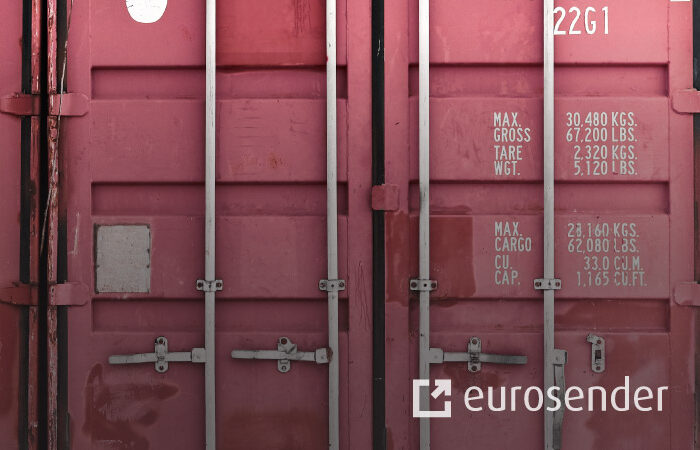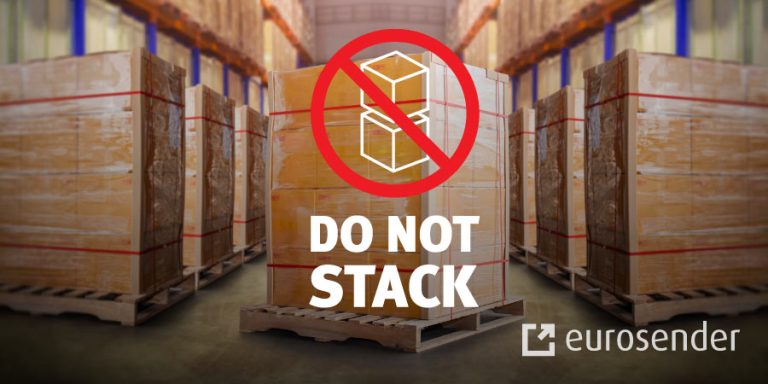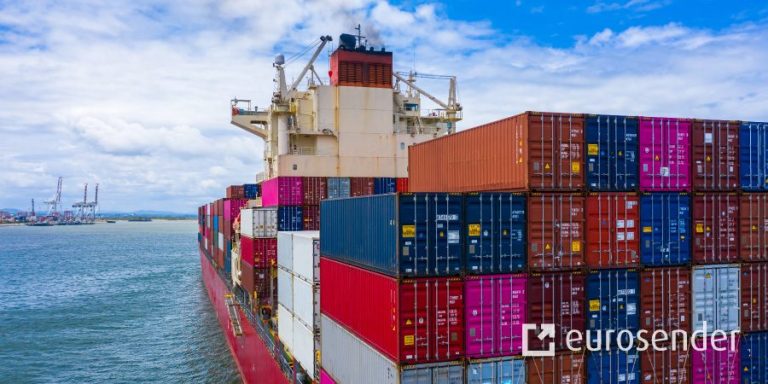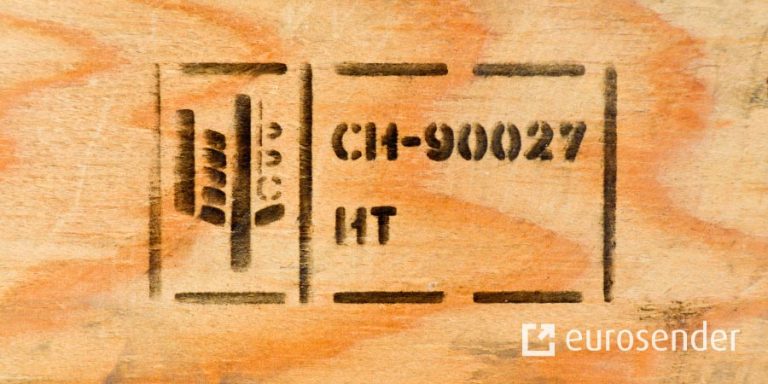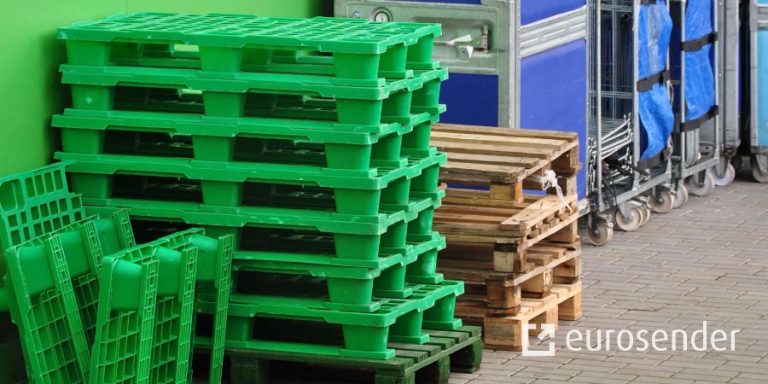What is tare weight in shipping, and why is it important?
Key takeaways
- Tare weight is the weight of an empty truck or trailer, crucial for calculating shipping costs and ensuring compliance with legal weight limits.
- It helps determine the total weight load, avoiding overloading issues that can lead to accidents and penalties.
- Knowing tare weight allows for accurate billing and logistics tracking, reducing losses from incorrect weight measurements.
- In parcel shipping, tare weight refers to the packaging weight, impacting overall shipping costs and weight limits.
Tare weight in the context of road freight shipping means the total weight of the truck or trailer when it is empty. Weight is an essential aspect in determining shipping costs and also for planning how much weight to load on the vehicle. Find out more about the difference between tare, gross and net weight and how to calculate them.
Create an account for free!
Definition of tare weight in logistics
In road freight shipping, the tare weight, also known as unladen weight, is defined as the total weight of the empty truck or trailer, when there is no product inside.
Be careful not to confuse this with the tare weight of the shipment itself. When referring to your cargo’s weight, the tare weight would be the weight of the packaging without considering its contents. For example, if you would ship 500 kg of items packed on pallets, once you would pack everything and place it on a scale, you will see that it would add up to 530 kg in total. This means that the tare weight of the pallets alone is 30 kg.
Definition of gross weight in logistics
Gross weight, also known as laden weight, is defined in logistics in most cases as the total weight of the shipment, including the packaging and vehicle.
Road freight shipments will include the product, packaging and vehicle’s weight in the final gross weight calculation. But before you go on calculating this for your own shipment, make sure to check the local shipping regulations as different countries may have different definitions on how to calculate gross weight for freight shipments.
In international shipping, gross weight is often used to calculate shipping costs and customs duties. Gross weight is calculated in different ways for different freight shipping methods:
- Road freight and rail transport: product weight + packaging (tare weight) + vehicle weight.
- Air freight: product weight + packaging weight plus the weight of the crew/passengers, fuel and aircraft.
- Sea freight: product weight + package or container weight (tare weight). Please note that this only includes the weight of the container, not the whole vessel.
How to calculate tare weight in road freight
Tare weight = Truck gross weight – cargo net weight
To calculate the tare weight, you will need to:
- Know the gross weight of the loaded truck.
- Subtract the cargo weight from the gross weight, including everything placed on the truck (packaging + content).
- The difference is the tare weight of the truck.
For example, if the gross weight of a truck and its contents is 7,000 kg and the net weight of the shipment is 2,000 kg, the tare weight is 5,000 kg.
You may also be interested in:
- How to calculate dimensional weight
- How to calculate volumetric weight
- How many pallets fit in a full truck?
What is the difference between tare weight vs gross weight vs net weight?
Another weight term you will frequently come across in shipping is the “net weight”. This is essentially the weight of the product itself, without the packaging or vehicle. In road freight, the net weight is also the total number of actual goods loaded on the vehicle, excluding the weight of the packaging or vehicle. While gross weight includes the tare weight, net weight excludes the tare weight.
All three weight values are usually indicated on the rear of shipping containers and trucks.
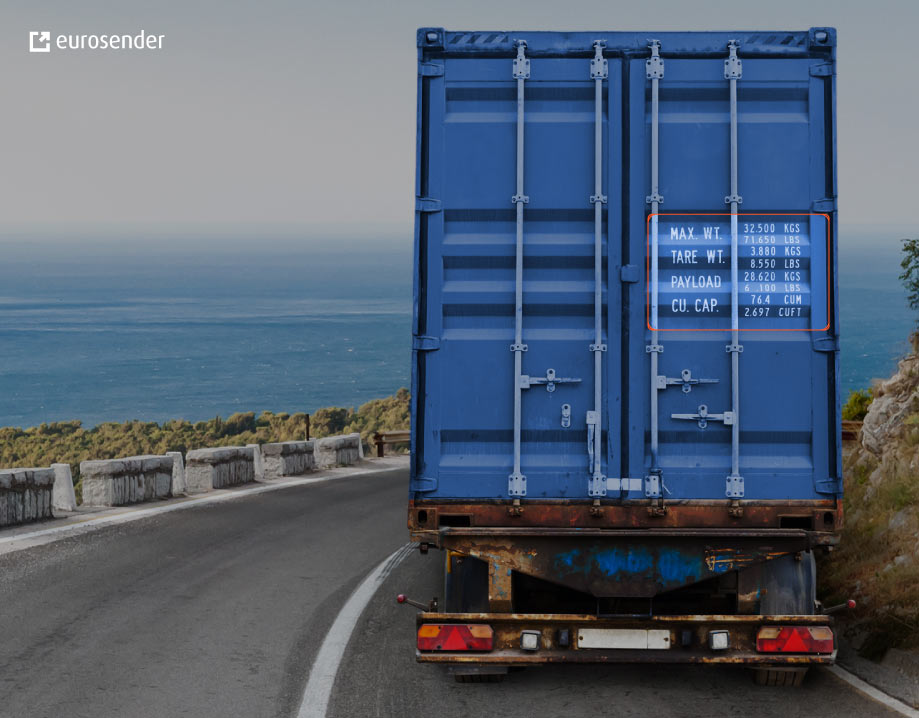
Knowing the difference between tare weight, gross weight and net weight will help you make more accurate cost calculations and, therefore, better logistics decisions.
To sum up, the difference between tare weight, gross weight and net weight, check the formulae below:
Tare weight = Gross weight – Net weight
Gross weight = Net weight + packaging/truck (tare) weight
Net weight = Gross weight – tare weight
Why is tare weight important in shipping?
Tare weight is a very important component of shipping and logistics for several reasons:
- It allows for accurate measurements and ensures that billing is correct.
- Knowing the tare weight is important to ensure that a shipment is legal on roads and bridges.
- It helps ensure that trucks are not overloaded, which can cause accidents.
- It allows businesses to keep track of their logistics and prevent losses caused by incorrect weight values.
Read more about:
Tare and gross weight for parcel shipping
You may have also come across tare weight when shipping simple parcels. In this context, the tare weight is the empty box without the contents. The standard weight limit in parcel shipping is 30 kg. If you are packing your parcel with the aim of keeping it under 30 kg, then the items you are shipping cannot account for all 30 kg. You need to make some weight allowance for the packaging as well. Therefore, if you ship 25 kg of items and then find that the fully-packed box would weigh 30 kg, the tare weight of the box alone is 5 kg.
The gross weight in parcel shipping is the content + packaging, therefore, the gross weight in the example above is calculated as follows: 25 kg (items) + 5 kg (box) = 30 kg (gross weight). Make sure that the weight provided in your order is the shipment gross weight.
What happens if my shipment weight is wrongly estimated?
If the shipment size exceeds the parameters allowed for the chosen freight service, you risk a collection refusal or a carrier surcharge (or both).
Shipments that are larger or heavier than indicated in the order, but still within the limits of the selected service, may be charged an extra fee.
Don’t hesitate to contact our team for more information when preparing your freight for shipping!
Interested in learning more about pallet and freight shipping? Check all our articles about pallet deliveries.
Create an account for free!
About the author
Marcel Nahtigal is the Head of Marketing at Eurosender, blending creativity with data-driven strategies to revolutionize logistics.
